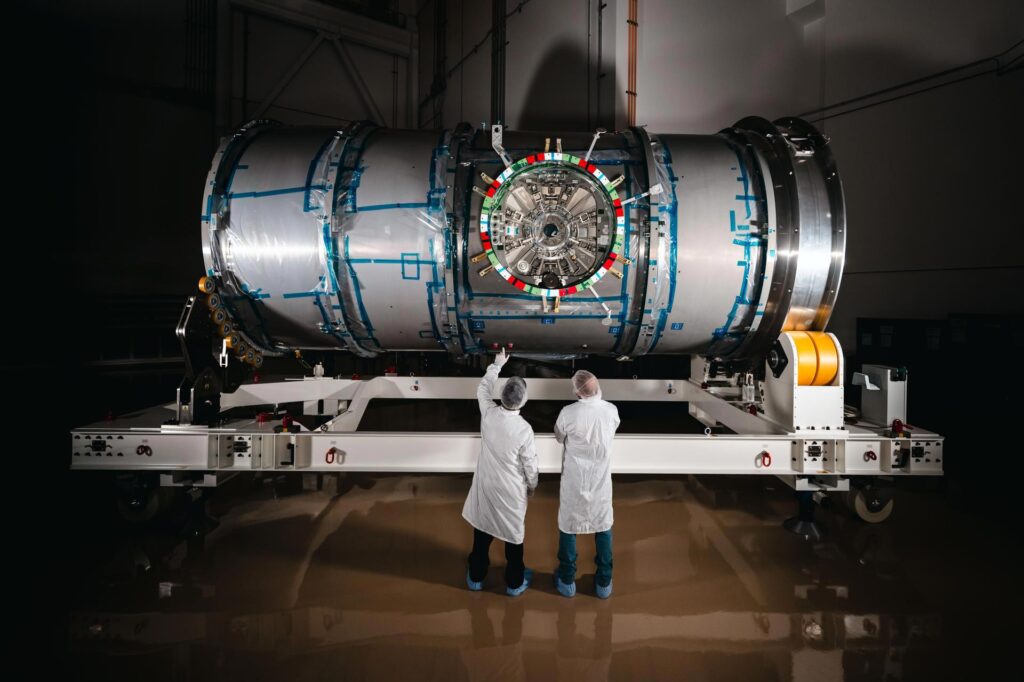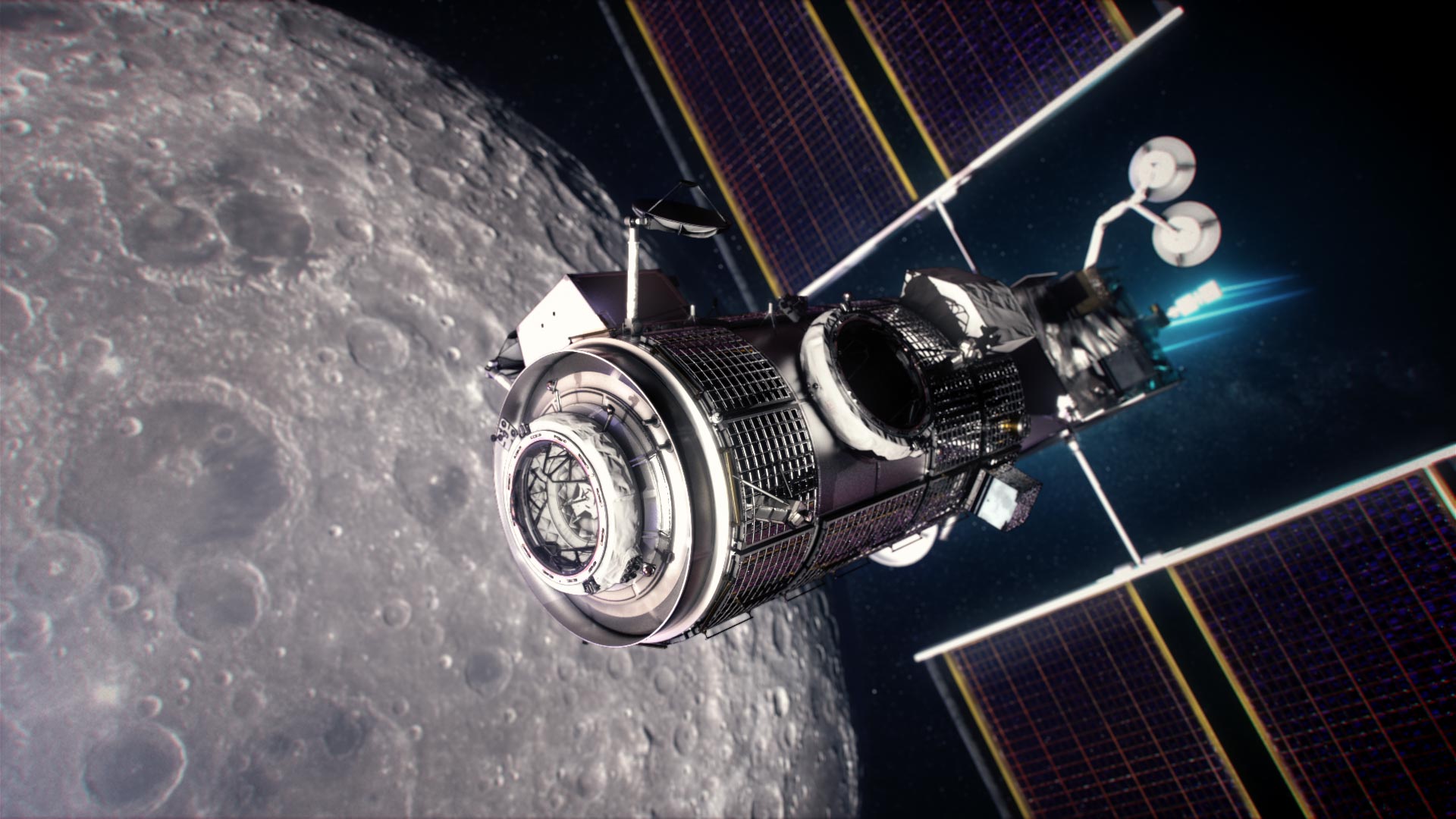Illustration showing a close-up of the Habitation and Logistics Outpost (HALO), one of the elements of Gateway. Credit: NASA
In a monumental stride toward lunar exploration, NASA’s Habitation and Logistics Outpost (HALO) module has safely landed in the United States. This critical component of the Lunar Gateway space station signifies a significant advancement in the Artemis program’s mission to establish a sustainable human presence on the Moon.
A Home Among the Stars
The HALO module, designed to serve as both living quarters and a command center, will orbit the Moon, providing astronauts with a safe haven during their missions. Equipped with life support systems, communication arrays, and docking ports, HALO is engineered to support a crew of four for up to 30 days. Its integration into the Gateway will facilitate extended lunar stays and serve as a staging point for deeper space exploration.

Gateway’s HALO module at Northrop Grumman’s facility in Gilbert, Arizona, on April 4, 2025, shortly after its arrival from Thales Alenia Space in Turin, Italy. Credit: NASA/Josh Valcarcel
International Collaboration and Cutting-Edge Technology
Constructed through a collaboration between NASA and international partners, including the European Space Agency (ESA), the HALO module exemplifies global cooperation in space exploration. Its design incorporates advanced technologies to ensure reliability and safety in the harsh environment of space.
The Road Ahead
With HALO’s arrival, the next steps involve rigorous testing and integration with other Gateway components, such as the Power and Propulsion Element (PPE). The fully assembled Gateway is slated for launch no earlier than 2027, with the Artemis IV mission marking the first crewed visit to this lunar outpost.
Curious to learn more? Explore how the HALO module will revolutionize our approach to lunar missions and what it means for the future of space exploration. Dailyscitech










